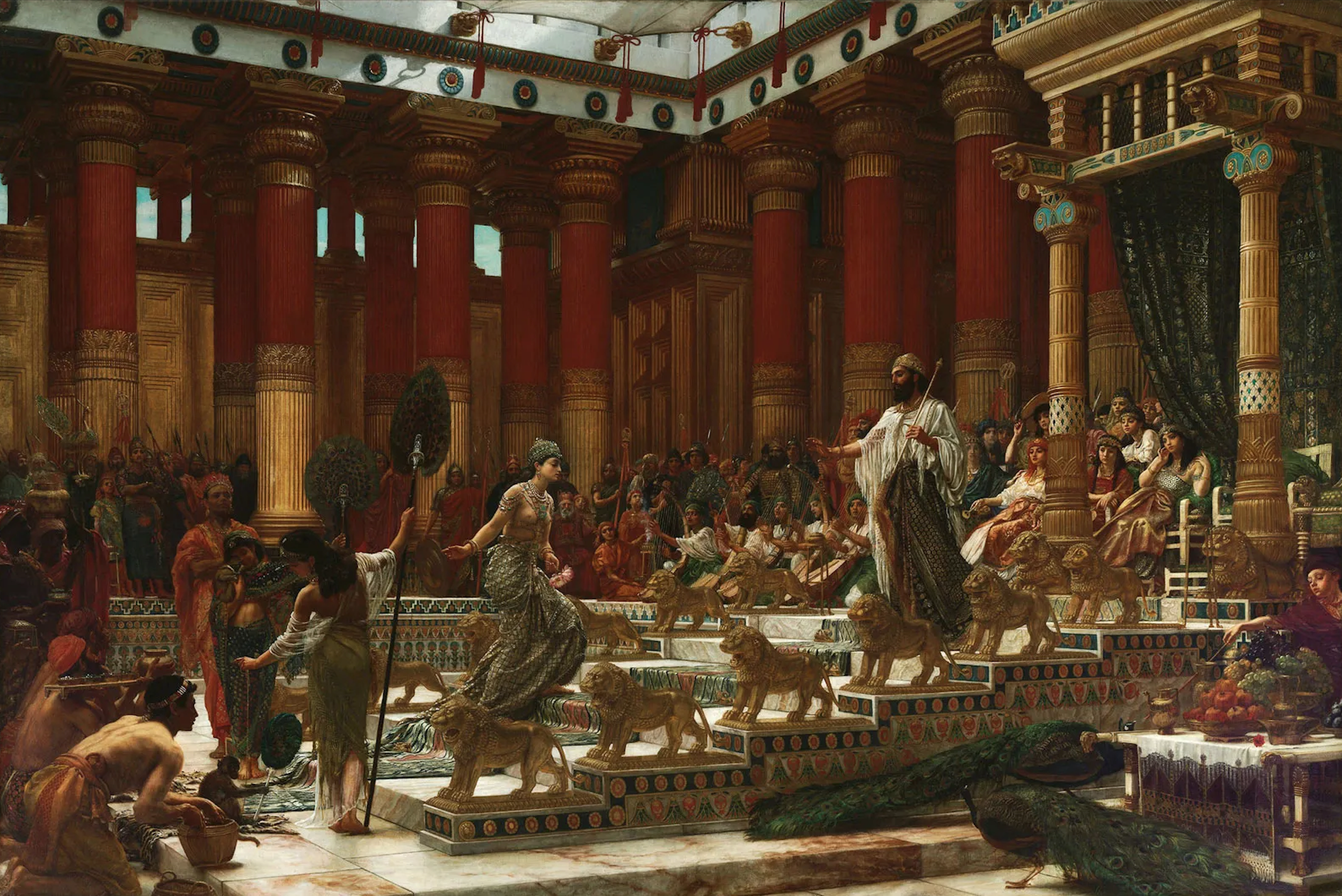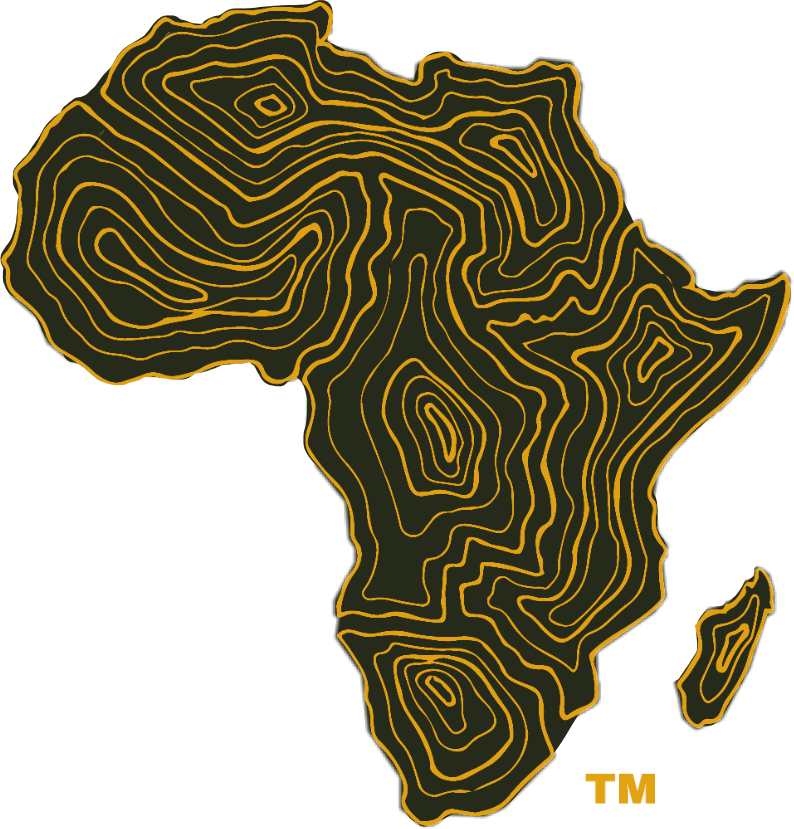
Image taken from Britannica
Title: Edward John Poynter: The Visit of the Queen of Sheba to King Solomon
The Visit of the Queen of Sheba to King Solomon, oil on canvas by Edward John Poynter, 1890; in the Art Gallery of New South Wales, Sydney, Australia.
Written by Keketso Dibakwane.
Edited by Ssima Sematimba and Kamdi Okonjo
Solomonic Dynasty
Solomonic Dynasty - Ethiopian History
Location of the Solomonic Dynasty
The Solomonic dynasty was founded in Ethiopia, a landlocked country in the Horn of Africa. It is officially the Federal Democratic Republic of Ethiopia. It borders north with Eritrea, northeast with Djibouti and Somaliland, eastern Somalia, south with Kenya, west with south Sudan, and north-west with Sudan. Ethiopia covers a total area of 1,100,000 square kilometers (420,000 square miles) and has a population of approximately 117 million people.
Ethiopian history could be described as a maze with a hidden pot of gold. Although history is complex, it is a complexity that spans centuries; and despite its complexity, the country's history is truly a puzzle that fits together to form a sublime picture. To comprehend Ethiopian history, one must return to the time and love of the famous Queen Makeda (of Sheba) and Israel's King Solomon.
Dynasty history
The Solomonic dynasty also known as the Solomonid dynasty is a lineage of Ethiopian emperors founded by Menelik I, the son of Queen Makeda of Sheba. In the Christian Bible, it has been recorded that the Queen of Ethiopia paid a visit to King Solomon in Jerusalem after hearing of his wisdom. King Solomon was renowned for the wisdom and knowledge he possessed as a result of God's providence. According to Ethiopian oral tradition, King Solomon was smitten by Makeda's beauty and slept with her during her visit. She later gave birth to their son, Ibn al-Malik (alternatively spelled Menelik), who established the Solomonic dynasty.
Ethiopian kings, including those from the Kingdom of Aksum, claimed descent from Menelik. Miguel F. Brooks translates an excerpt from the book Kebra Negast in which he explains how Queen Makeba elevated Menilek to the throne of Ethiopia.
He translates:
“On the third day of the celebrations Makeda delivered over to her son seventeen thousand chosen horses, which were to watch the army of the enemy, and one thousand chosen mules, apparel of honor, gold and silver measured by the omer; and she delivered over to her son everything that was his by law and the throne of her kingdom.
And the Queen said unto her nobles: "Speak ye now and swear by the heavenly Zion that ye will not make women queens or set them upon the throne of the kingdom of Ethiopia, and that no one except the male seed of David, the son of Solomon the King, shall ever reign over Ethiopia, and that ye will never make women queens." And all the nobles of the king's house swore, also the governors, the councilors and the administrators”.
Regrettably, the exact origins of the dynasty are unknown. Numerous historians and academics hold divergent views, hypotheses, and conclusions regarding the dynasty's founding date. According to some scholars, the genealogy of the Solomonids was first recorded in the 14th century, in the book Kebra Negast ("Glory of Solomon" The True Ark Of The Covenant). The Solomonic dynasty is occasionally referred to as the Solomonic restoration period because, in 1270, Emperor Yekuno Amlak became emperor and declared himself to be the lineal descendant of Menelik I, in contrast to the Zagwes, who did not.
Dynasty culture and people
There is little information about the people and culture of the Solomonic dynasty. Much of the dynasty's history is devoted to the dynasty's founding and restoration periods. According to Solomonic dynasty legend, the Zagwe's overthrow demonstrated the significance of Yasus Moa, who established a community around the lake Haik region. According to legend, this community influenced Yekuno Amlak to become the dynasty's emperor. One could interpret political communities as groups of people who believed their emperor should be someone they supported and could support. It could be interpreted as a community that was deeply invested in the dynasty.
In contrast to the dynasty's prehistory, the period following the 13th century yields a lot of information about the people who lived after the beginning of the Solomonic dynasty. In contrast to the Zagwe dynasty, the Yekuno Amlak period established a legitimate descendant of Queen Makeda and King Solomon.
Importance of Solomonic Dynasty
The Solomonic dynasty's legacy can be seen in its influence on the kingdom of Aksum. It had an impact on the religion, language, and leadership of the people. King Solomon is still remembered today for his wisdom (hence the idiom "as wise as Solomon").
African Christianity has been and continues to be a source of contention both within African society and throughout the world. Many believe that Christianity and the belief in a divine power originated in the west. It is through research into the Solomonic dynasty and the Garima gospels that Africans come to understand how inextricably linked Christianity is to Africans. It teaches Africans that Christianity is not a 'white man's religion, but that its very development included Africans. It enables them to appreciate the fact that Christianity did not originate in the western world. Icons such as King Solomon demonstrate the value of representation and research into one's own history.
References
Dhwty, “How is the fallen kingdom of Aksum connected to the Queen of Sheba and the Ark of the covenant”. 2 January 2016. Available at: https://www.ancient-origins.net/ancient-places-africa/how-fallen-kingdom-aksum-connected-queen-sheba-and-ark-covenant-005089
Aleksa Vučković, “Abyssinia and the Ethiopian Empire: The Ancient History of a Struggling Nation”. 19 September 2020. Available at: https://www.ancient-origins.net/ancient-places-africa/ethiopian-empire-0014282
Kerry Sullivan, “The Kingdom of Axum: Facts and Legends of a First Millennium Powerhouse”. 13 April 2019. Available at: https://www.ancient-origins.net/ancient-places-africa/axum-legendary-kingdom-ancient-ethiopia-006720
Britannica, T. Editors of Encyclopedia. "Dynasty." Encyclopedia Britannica, November 8, 2016. Available at: https://www.britannica.com/topic/dynasty
Heldman, Marilyn E., and Getatchew Haile. "WHO IS WHO IN ETHIOPIA'S PAST, PART III: Founders of Ethiopia's Solomonic Dynasty." Northeast African Studies 9, no. 1 (1987): 1-11. Available at: http://www.jstor.org/stable/43661131
Marcus, Harold G.. "TWO. The Golden Age of the Solomonic Dynasty, to 1500" In A History of Ethiopia, 17-29. Berkeley: University of California Press, 2020. Available at: https://doi.org/10.1525/9780520925427-005



